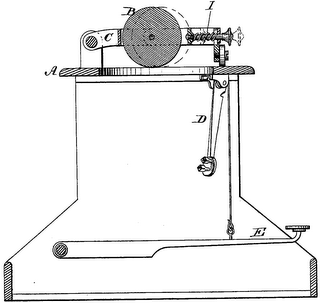With the older manual typewriters each keystroke caused a metal bar to swing down or forward to hit the paper. If the typist worked too quickly, the metal typebars would collide and jam the mechanism. The design solution was to relocate the keys so that letters often typed immediately after one another, such as "i" and "e," would be placed on opposite sides of the machine. -- Stanley Coren: The Left-Hander Syndrome, Free Press, New York (1992).
Swing down or forward? No. Typewriters in the 1880s with QWERTY keyboard had typebars to swing up to hit the back of paper. They are called upstrike typewriters and their typebars never jam. Furthermore, in English, the most frequently-used letter sequence is "th". On QWERTY keyboard, you see T and H are adjacently placed. The second is "er" + "re", also placed in neighborhood of one another.


